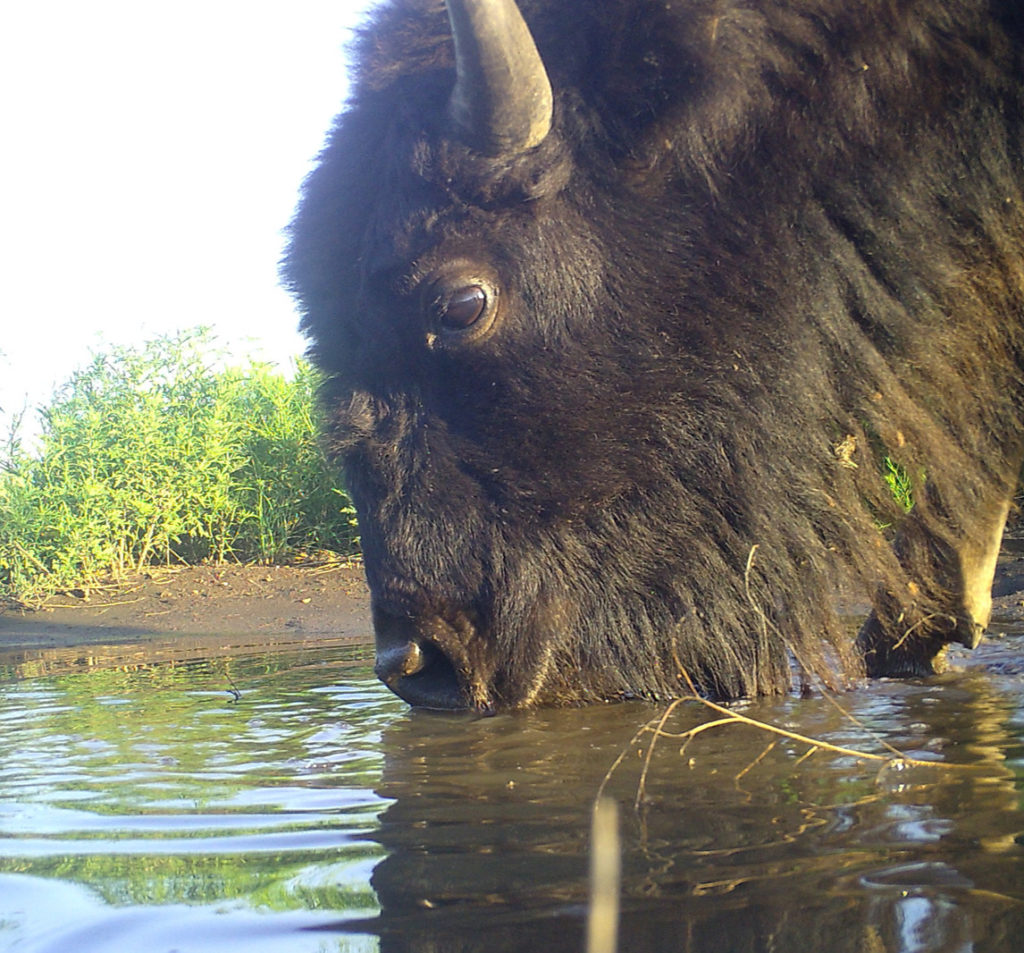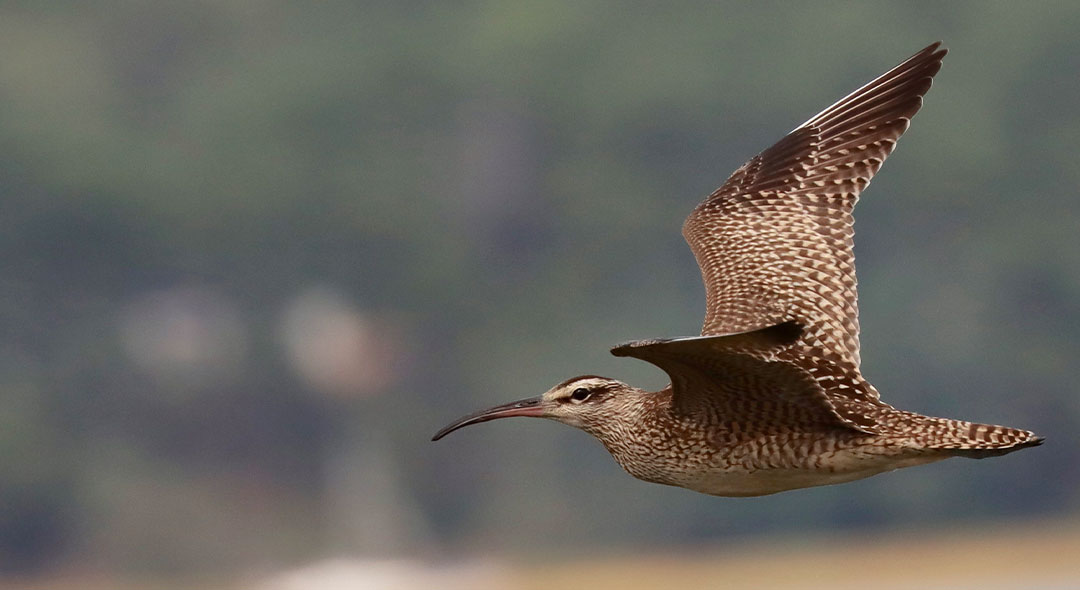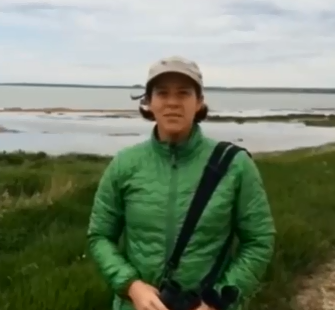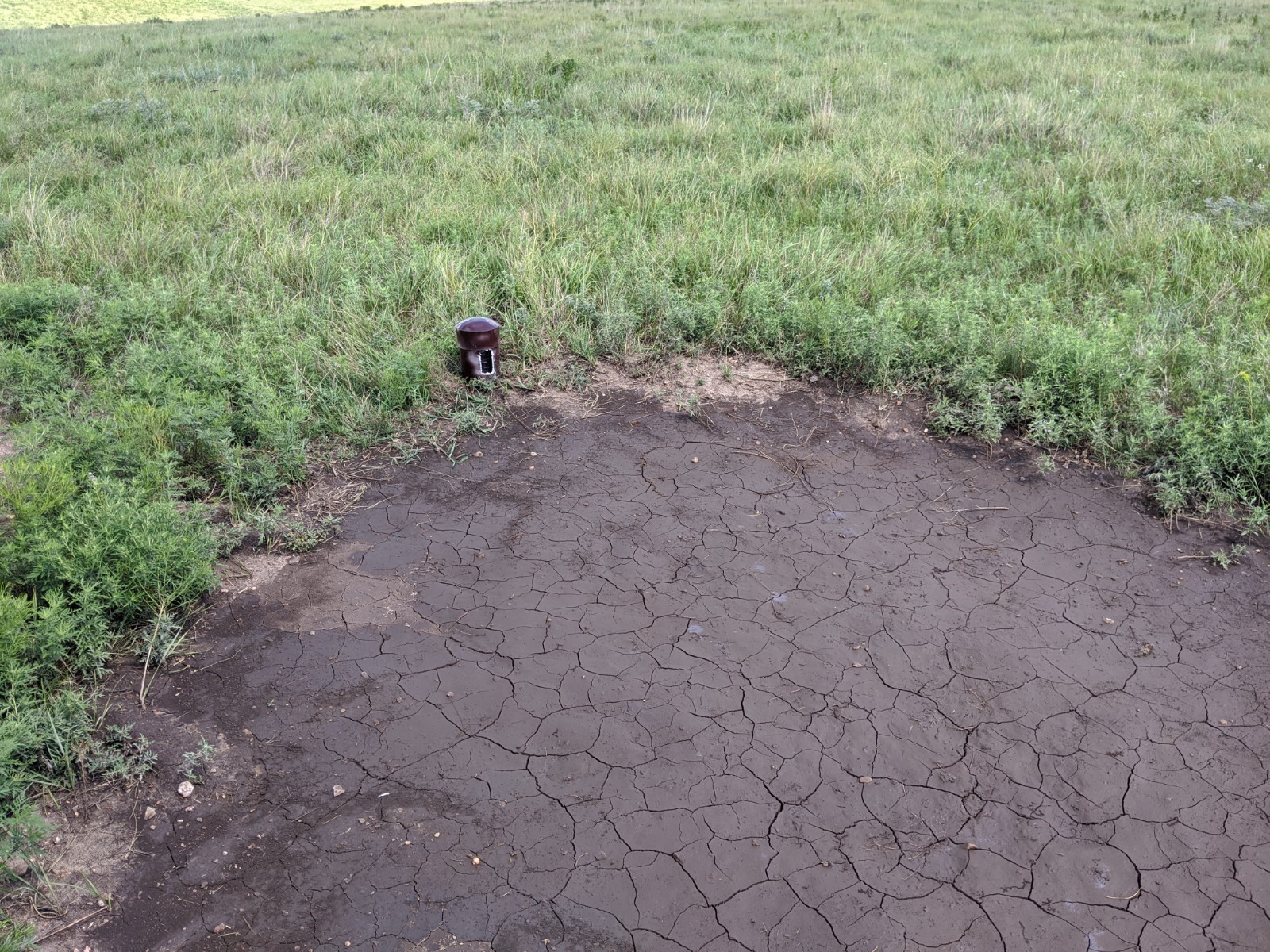Thirty to sixty million big and shaggy American bison (Bison bison) once roamed North America’s Great Plains (USFWS). This enormous number of bison moved across the landscape, eating grasses, trampling and fertilizing the prairie, and pawing at and rolling about in the dirt. The latter behavior resulted in shallow depressions called bison wallows.
Bison shaped their landscape by creating a patchwork of short grasses where the herd grazed, taller grasses where they hadn’t grazed, and disturbed, shallow depressions where bison wallowed the prairie to dust themselves for insect control. This process of altering the landscape’s surface through their activities means that bison were keystone species, supporting a greater variety of plants and wildlife through their grazing and wallowing behavior (Knapp et al. 1999). In terms of impact, one estimate suggests there may have been five or more bison wallows per acre (NPS). While bison wallows are not evenly distributed across the landscape, it is clear that bison were a major influence in the prairies.

Today, only small remnant herds of bison exist in the Flint Hills, mostly on privately owned ranches. On the Konza Prairie Biological Station, a tallgrass prairie preserve in northeastern Kansas where the ecological role of bison is actively being studied, managers observe more than one wallow per acre and about 11 wallows per bison (E. Horne, pers com). But elsewhere in the Flint Hills, many thousands of relic bison wallows continue to dot the landscape, even in areas where there have been no bison for more than 150 years. Areas where bison are actively working wallows have less vegetation and more mud, which provides different habitat than the more vegetated, historic, bison wallows. Both historic and active wallows fill with spring rains (Gerlanc and Kaufman 2003), creating shallow ephemeral wetlands, some that provide ideal stopover sites for certain shorebirds as they head north to breeding grounds.
Part of the Great Plains, the Greater Flint Hills landscape in Kansas and Oklahoma represents the last remaining expanse of tallgrass prairie in North America. Many bird and mammal species rely on this incredible place. Each year American Golden-Plovers (Pluvialis dominica), Buff-breasted Sandpipers (Calidris subruficollis), Upland Sandpipers (Bartramia longicauda), and Killdeer (Charadrius vociferus) use the Greater Flint Hills extensively during their northbound migration. In addition, other shorebird species more commonly associated with shallow water, including Baird’s Sandpipers (Calidris bairdii), Least Sandpiper (Calidris minutilla), and Lesser Yellowlegs (Tringa flavipes), use wet habitats in the Flint Hills.





 Back to all
Back to all

